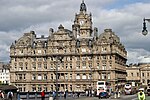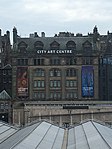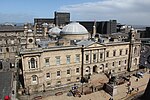Edinburgh, Leith and Newhaven Railway

The Edinburgh, Leith and Newhaven Railway was a railway company formed in 1836 to connect the city of Edinburgh with the harbours on the Firth of Forth. When the line connected to Granton, the company name was changed to the Edinburgh, Leith and Granton Railway. It opened part of its route in 1846, but reaching the centre of Edinburgh involved the difficult construction of a long tunnel; this was opened in 1847. It was on a steep incline and was worked by rope haulage. The rope-worked tunnel proved a major handicap, and after the company had been taken over by the North British Railway, a longer but more convenient route was built round the eastern edge of the city at Abbeyhill. It opened in 1868. By the end of the nineteenth century the Leith station was unsuitable for the developing suburban passenger traffic, and a new branch to Leith Central station was built, opening in 1903. All of the original route has been dismantled, except part of the line from Piershill to a waste consolidation depot at Powderhall which remained in use until it closed in 2016.
Excerpt from the Wikipedia article Edinburgh, Leith and Newhaven Railway (License: CC BY-SA 3.0, Authors, Images).Edinburgh, Leith and Newhaven Railway
Princes Street, City of Edinburgh Old Town
Geographical coordinates (GPS) Address Nearby Places Show on map
Geographical coordinates (GPS)
| Latitude | Longitude |
|---|---|
| N 55.9524 ° | E -3.1898 ° |
Address
Edinburgh Waverley
Princes Street
EH2 2BZ City of Edinburgh, Old Town
Scotland, United Kingdom
Open on Google Maps









